Updates
24/05/2023

What is Arsenic in water? The presence of arsenic, a toxic element, in water supplies. Arsenic is a naturally occurring element found in the Earth's crust and can be released into water sources through geological processes. It can also enter water supplies as a result of human activities such as mining, industrial discharges, or the use of arsenic-containing pesticides.When arsenic contaminates drinking water sources, it poses a significant health risk. Chronic exposure to arsenic in drinking water has been linked to various adverse health effects, including skin lesions, cardiovascular diseases, respiratory problems, and an increased risk of certain types of cancer, such as skin, bladder, and lung cancer.Filtrating arsenic from water using a self-cleaning water filter requires a specialized filtration system capable of removing arsenic contaminants. Here's a general overview of the steps involved:Serus self-cleaning water filter system specifically designed for arsenic removal. Our Filters utilize advanced filtration technologies Follow our instructions to install the self-cleaning water filter. This typically involves connecting the filter unit to your main water supply line or integrating it into your existing plumbing system. Make sure to adhere to all safety guidelines and local plumbing codes.Perform Regular Maintenance: Self-cleaning water filters require periodic maintenance to ensure optimal performance. Follow the manufacturer's guidelines for maintenance, which does not include replacing filter cartridges, but activating the self-cleaning function is needed. Regular maintenance is crucial for sustained arsenic removal efficiency.Monitor Water Quality: Regularly monitor the water quality after installing the self-cleaning water filter system. Conduct periodic water tests to assess arsenic levels and verify the effectiveness of the filtration system. This will help you determine if any adjustments or additional measures are required.Follow our Recommendations: Adhere to the instructions regarding filter lifespan, replacement intervals, and any specific requirements for the self-cleaning function. We provide guidelines on the expected filter lifespan and when to replace or regenerate the filter media to maintain optimal arsenic removal efficiency.Ensure Proper Disposal: Disposal of spent filter cartridges or regenerating materials should be carried out according to local regulations and manufacturer guidelines. Arsenic-laden filter media should be handled and disposed of appropriately to prevent environmental contamination.
24/05/2023
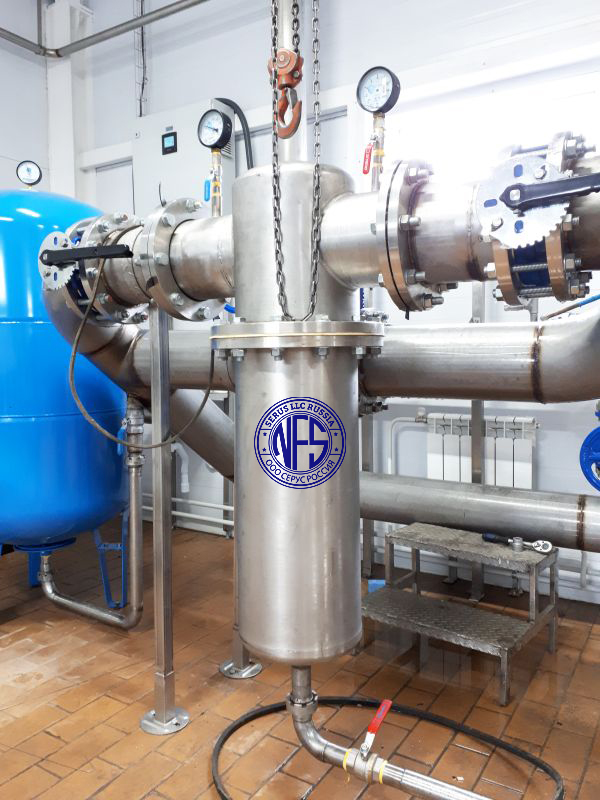
Sulfate can enter water supplies through various mechanisms:Natural Sources: Sulfate is naturally present in the Earth's crust and can dissolve in water through geological processes. Rainwater or surface water can come into contact with sulfate-containing minerals, such as gypsum or pyrite, and dissolve the sulfate ions.Industrial Activities: Certain industries produce wastewater containing high levels of sulfate. Industries such as mining, metal processing, chemical manufacturing, and oil refining may discharge sulfate-rich effluents into nearby water bodies if not properly treated.Agricultural Practices: The use of sulfate-containing fertilizers and pesticides in agriculture can contribute to sulfate levels in water supplies. Runoff from agricultural fields can carry these substances into rivers, lakes, and groundwater, potentially increasing sulfate concentrations.Urban Runoff: Urban areas with impervious surfaces like roads, parking lots, and rooftops can contribute to sulfate in water supplies. Rainwater runoff from these surfaces can pick up sulfate-containing compounds, such as atmospheric deposition from industrial emissions or vehicle exhaust, and transport them into water bodies.Natural Gas and Oil Extraction: Sulfate can be released into water supplies during the extraction of natural gas and oil. Processes like hydraulic fracturing (fracking) can lead to the mobilization of naturally occurring sulfates and other chemicals present in underground formations, potentially impacting nearby water sources.Geological Characteristics: Certain geological formations may contain naturally high levels of sulfate. If water sources come into contact with these formations, they can dissolve and carry sulfate ions into the water supplies.It is worth noting that sulfate itself is generally not harmful to human health at typical levels found in water supplies. However, elevated sulfate concentrations can affect the taste, odor, and aesthetic qualities of water. Additionally, sulfate-reducing bacteria can thrive in water with high sulfate content, leading to the production of hydrogen sulfide, which can cause odor issues.To ensure safe and aesthetically pleasing water supplies, monitoring sulfate levels, implementing appropriate wastewater treatment measures, and promoting responsible agricultural and industrial practices are crucial.
24/05/2023
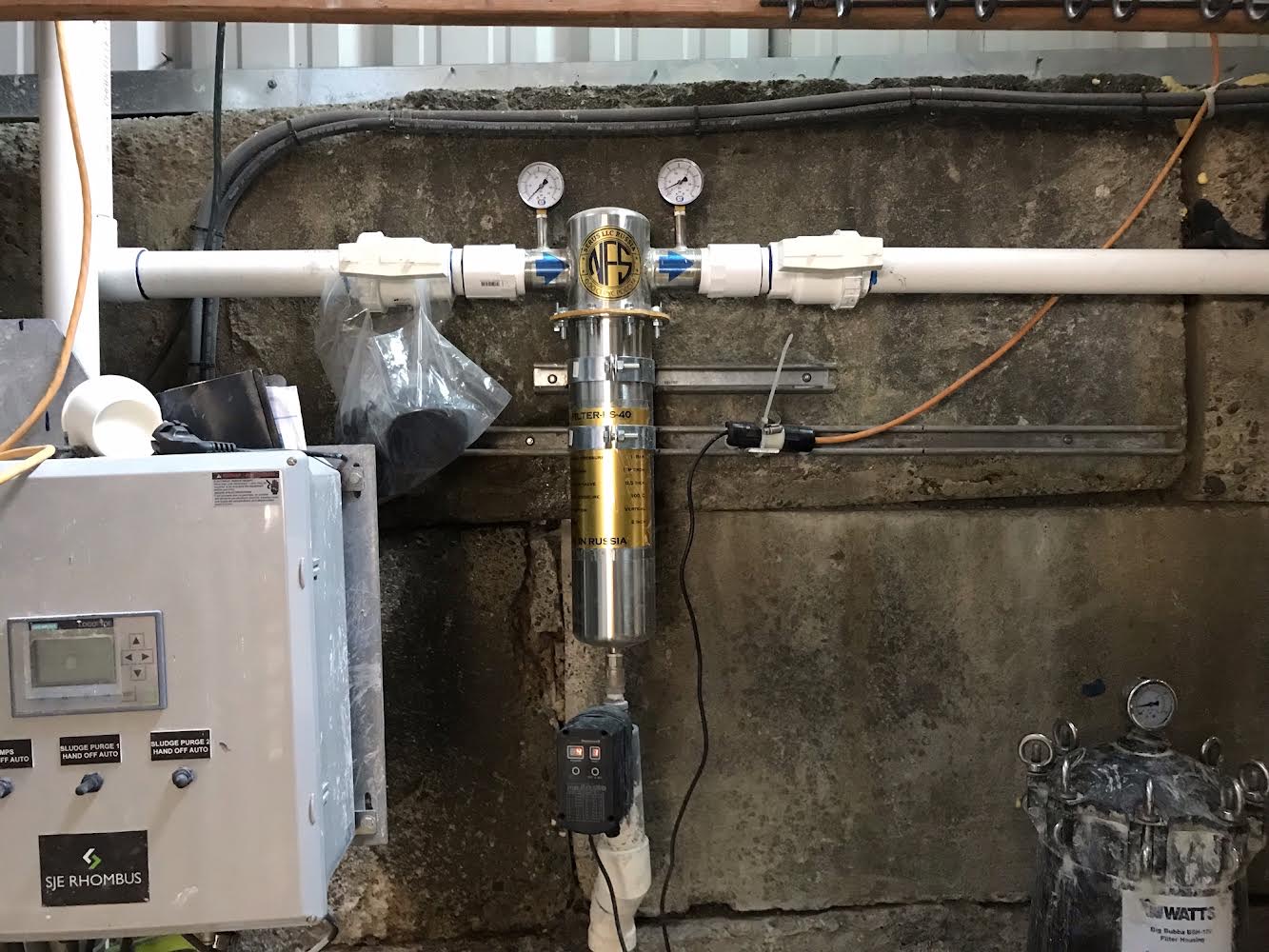
Nitrate can enter water supply sources through various pathways:Agricultural Runoff: Nitrate is commonly found in fertilizers used in agricultural practices. When farmers apply fertilizers to their fields, excess nitrogen can be washed away by rain or irrigation water, leading to nitrate runoff into nearby water bodies or seeping into groundwater.Animal Waste: Livestock operations, such as concentrated animal feeding operations (CAFOs) or large-scale farms, generate significant amounts of animal waste. The manure from these operations contains nitrogen compounds, including nitrate. Improper management of animal waste, such as inadequate storage or disposal, can result in nitrate leaching into the surrounding soil and eventually contaminating water sources.Septic Systems: Improperly designed, installed, or maintained septic systems can be a source of nitrate contamination. If septic systems are located too close to groundwater sources or if they malfunction, nitrate from wastewater can seep into the ground and contaminate groundwater.Industrial Activities: Certain industrial processes, such as manufacturing, mining, and chemical production, can contribute to nitrate contamination. Wastewater discharged from these industries may contain high levels of nitrate, and if not properly treated, it can find its way into water supplies.Landfills and Waste Disposal Sites: Landfills and waste disposal sites, especially those that handle organic waste or wastewater treatment sludge, can release nitrate into the surrounding soil and groundwater. Leachate from these sites can contain elevated levels of nitrate, which may eventually reach water supply sources.Atmospheric Deposition: Nitrate can also enter water supplies through atmospheric deposition. Nitrogen compounds released into the atmosphere from sources like industrial emissions, vehicle exhaust, and agricultural activities can be carried by rain or snow and deposited into water bodies.It's important to note that nitrate itself is not harmful, but when it exceeds safe drinking water standards, it can pose health risks, particularly to infants and pregnant women. To ensure safe water supplies, proper management of agricultural practices, effective wastewater treatment, and regular monitoring of water sources are necessary to mitigate nitrate contamination.
24/05/2023
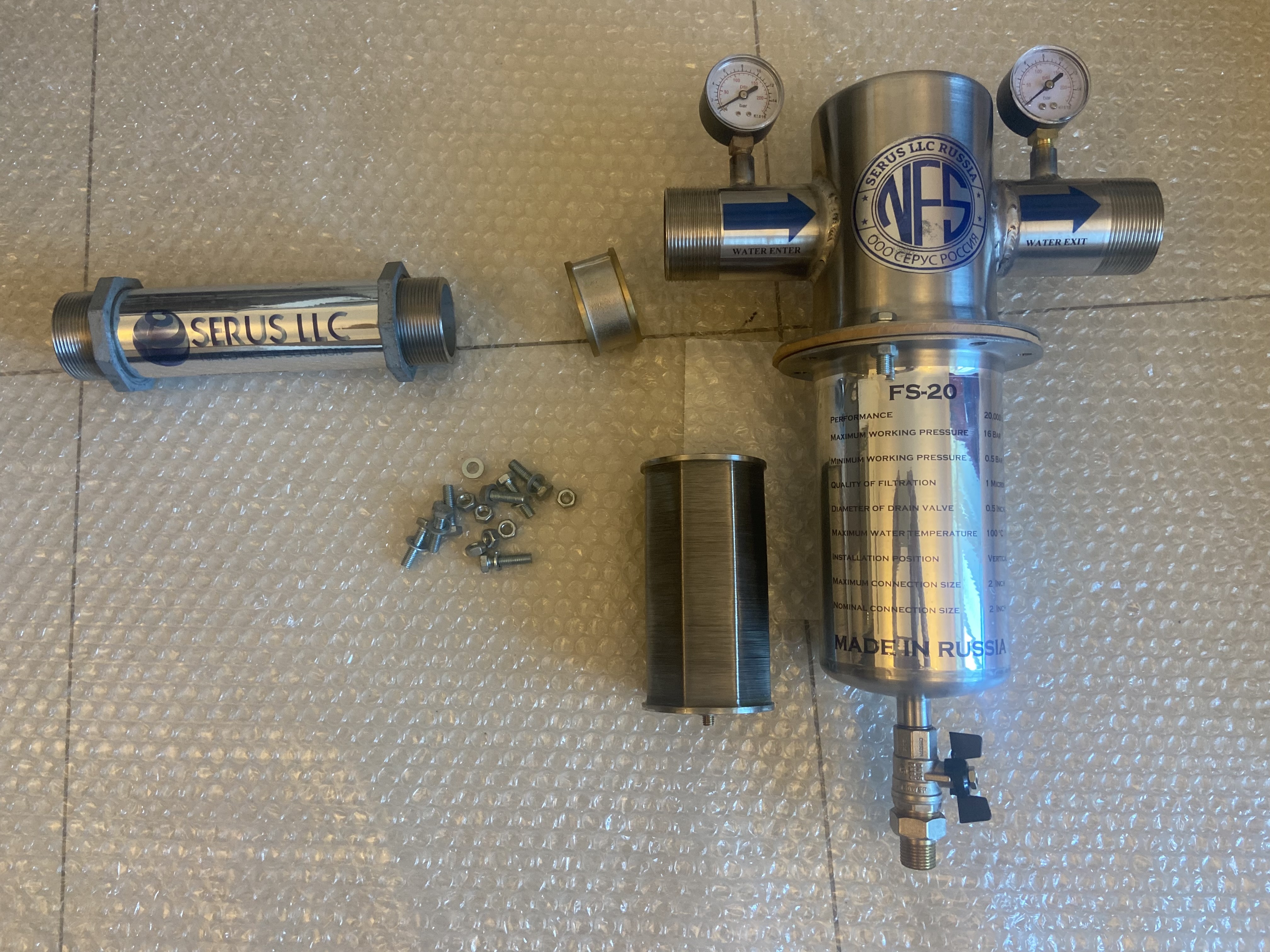
To eliminate, decrease, and control phosphate levels in water using Serus self-cleaning water filter, follow these steps:Assess Phosphate Levels:
Determine the phosphate content in your water source by conducting a water test or referring to the water quality report. This will help you understand the severity of the phosphate contamination.Install the Water Filter System:
Follow the instructions to install the self-cleaning water filter system. Typically, this involves connecting the filter unit to your main water supply line or installing it under the sink.Perform Regular Maintenance:
Serus Self-cleaning water filters require periodic maintenance to ensure optimal performance. Follow the guidelines for maintenance, which does not include replacing filter cartridge. Activating the self-cleaning function is required. Regular maintenance prevents clogging and ensures continuous phosphate removal.Monitor and Test Water Quality:
Regularly monitor the water quality after installing the self-cleaning water filter. Conduct periodic water tests to assess phosphate levels and verify the effectiveness of the filtration system. This will help you determine if any adjustments or additional measures are required.Consider Source Control:
Identify potential sources of phosphate contamination in your environment. This may include fertilizers, detergents, and cleaning products. Implement best practices to minimize phosphate runoff and entry into your water supply, such as proper disposal and using phosphate-free alternatives.
Seek Our Professional Advice: If your water supply has high phosphate levels or if you require specialized treatment, consult a water treatment professional. We can evaluate your specific situation and recommend appropriate filtration or treatment options.Stay Informed and Up-to-Date: Stay informed about the latest advancements in water filtration technology and phosphate removal techniques. Regularly check for updates from reputable sources, attend workshops or seminars, and consult experts in the field to ensure you have the most effective solutions for eliminating, decreasing, and controlling phosphate in your water supply.By following these steps and utilizing a self-cleaning water filter system, you can effectively reduce and control phosphate levels in your water, promoting cleaner and healthier water for various purposes.
24/05/2023
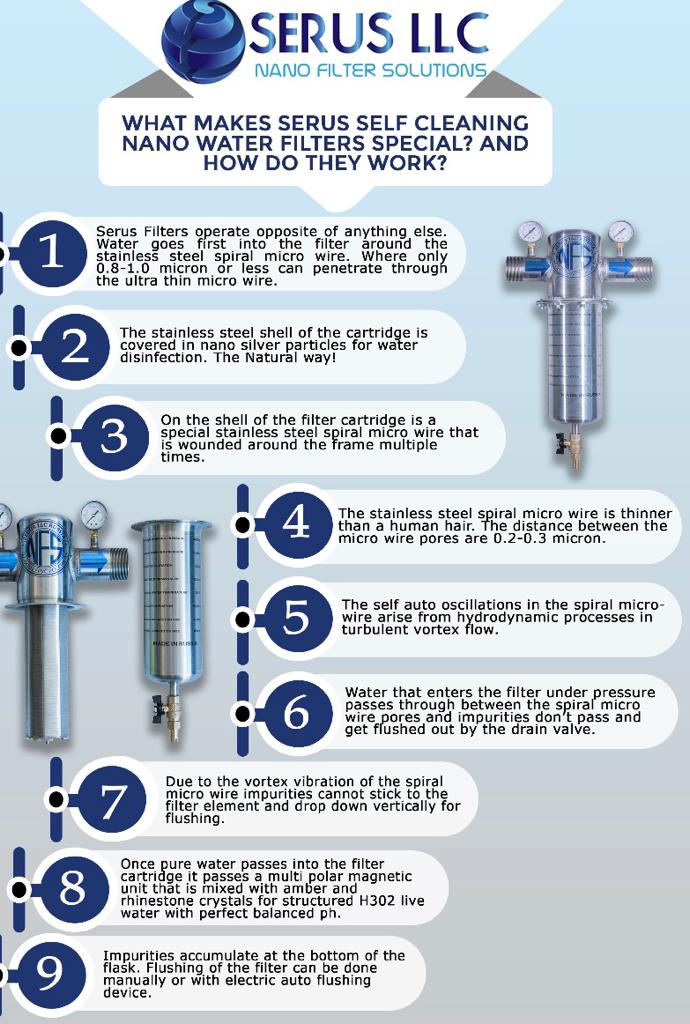
Eliminating and controlling sodium in water can be achieved using self-cleaning water filters. Here's a step-by-step guide on how to accomplish this:Understand the Sodium Content: Determine the sodium levels in your water supply by conducting a water test or referring to the water quality report provided by your local water utility. This will help you gauge the extent of sodium contamination.Choose a Serus Self-Cleaning Water Filter: Serus self-cleaning water filter system is specifically designed to remove sodium from water. Follow the manufacturer's instructions to install the self-cleaning water filter system. This involves connecting the filter unit to your main water supply line or installing it under the sink.Perform Regular Maintenance: Self-cleaning water filters require periodic maintenance to ensure optimal performance. This does not involve replacing filter cartridges, cleaning filter media, or activating the self-cleaning function. Regular maintenance helps prevent clogging and ensures continuous sodium removal.Monitor and Test the Water: Regularly monitor the water quality after installing the self-cleaning water filter. Conduct periodic water tests to assess the sodium levels and verify the effectiveness of the filtration system. This will help you determine if any adjustments or additional measures are needed.Consider a Low-Sodium Diet: While a self-cleaning water filter can significantly reduce sodium levels, it's important to note that it may not eliminate all sodium from the water. If sodium restriction is critical for health reasons, consider following a low-sodium diet in conjunction with using the filtered water.Consult a Water Treatment Professional: If your water supply has extremely high sodium levels or if you require specialized treatment, it's advisable to consult a water treatment professional. They can assess your specific situation and recommend appropriate filtration or treatment options.Stay Informed and Up-to-Date: Keep yourself informed about the latest advancements in water filtration technology and sodium removal techniques. Regularly check for updates from reputable sources, attend workshops or seminars, and consult experts in the field to ensure you have the most effective solutions for eliminating and controlling sodium in your water supply.By following these steps and utilizing a self-cleaning water filter system, you can effectively reduce and control sodium levels in your water, providing you with cleaner and healthier drinking water.
24/05/2023
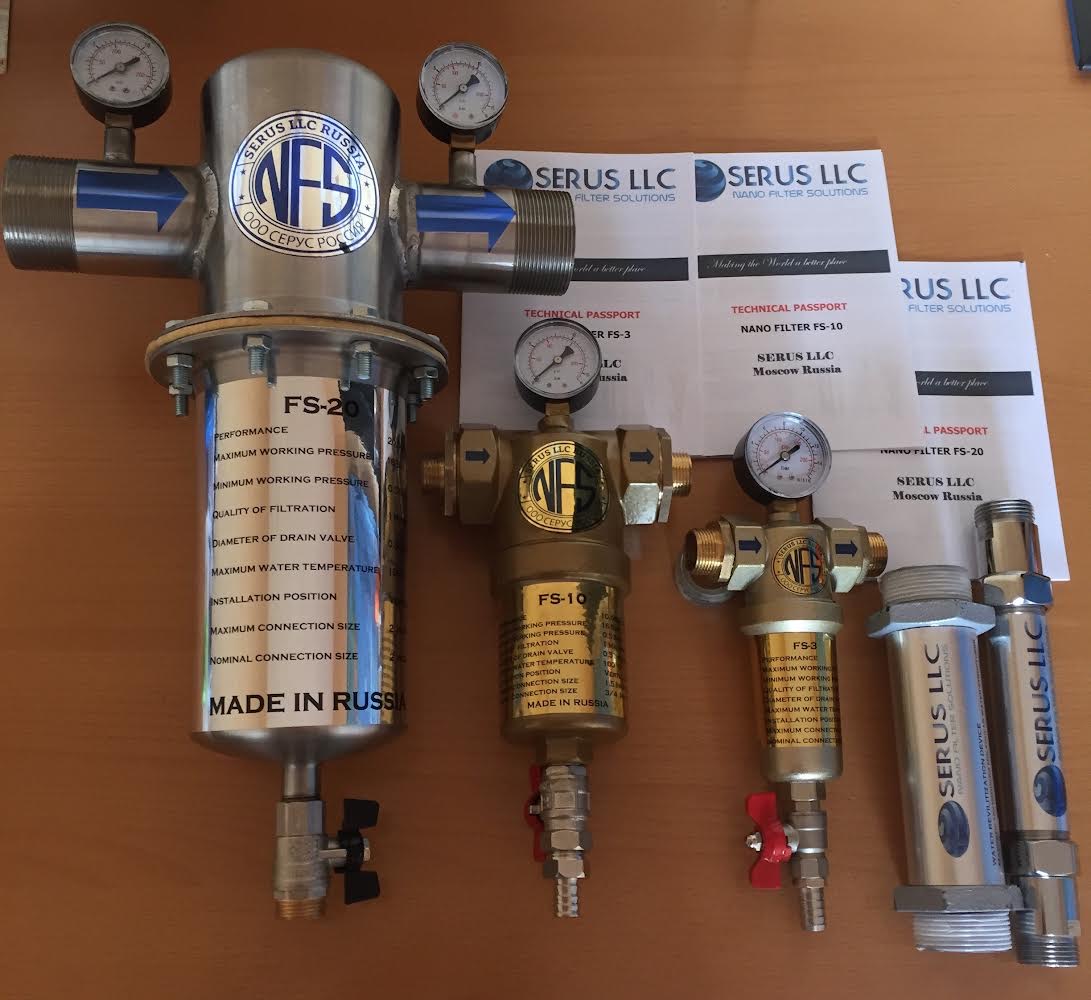
Eliminate Control Manganese In Water With Self Cleaning Inline 1 Micron Water Filter. No Changing Cartridges. No Electricity. No maintainance. 10 Year Warranty!Manganese can enter water supply sources through various pathways:Natural Weathering: Manganese is naturally present in the Earth's crust and can be released into water sources through the weathering of rocks and soils that contain manganese-bearing minerals. Over time, rainwater and surface water can dissolve and carry manganese particles into rivers, lakes, and groundwater.Industrial Activities: Industrial processes, such as mining, metal production, and steel manufacturing, can contribute to the release of manganese into water sources. Wastewater discharges from these industries may contain elevated levels of manganese, which can contaminate nearby water bodies if not properly treated.Agricultural Practices: The use of manganese-based fertilizers and pesticides in agriculture can introduce manganese into water supplies. Runoff from agricultural fields, especially during heavy rainfall or irrigation, can carry manganese residues into rivers, streams, and groundwater.Corrosion of Manganese-containing Pipes: In some older plumbing systems, pipes and fittings made of manganese-containing materials can corrode over time, leading to the release of manganese into the water supply. This is more common in areas with acidic or corrosive water conditions.Municipal Water Treatment: In certain cases, manganese can be present in water supplies due to incomplete removal during the municipal water treatment process. If the water treatment facilities are not equipped with appropriate filtration and treatment methods, residual manganese may remain in the treated water.Underground Sources and Wells: Manganese can naturally occur in underground sources, such as wells and aquifers. When water is pumped from these sources, it may contain naturally elevated levels of manganese.It is important to note that manganese is an essential nutrient for human health, required in small amounts. However, excessive levels of manganese in drinking water can have adverse effects on health, particularly in vulnerable populations such as infants and children. Monitoring manganese levels in water supplies is crucial to ensure compliance with regulatory guidelines.Water treatment methods, including oxidation, filtration, and ion exchange, can be employed to reduce manganese levels if they exceed recommended limits. Regular maintenance and replacement of corroded pipes, as well as proper management of industrial and agricultural activities, are essential to prevent manganese contamination in water sources.
24/05/2023
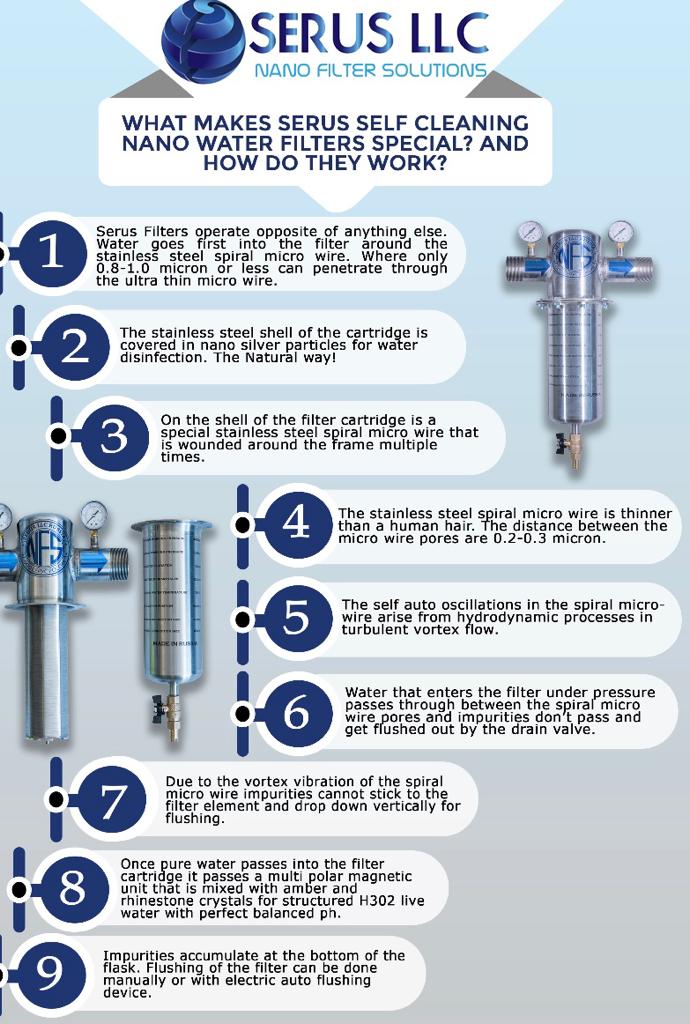
Algae Formations in Ponds and Rivers: Understanding the Impact of Hot Weather Conditions and Other FactorsAlgae formations in ponds and rivers have become a significant environmental concern, particularly during hot weather conditions. Algae are simple aquatic plants that play a vital role in the ecosystem, but excessive growth can lead to harmful algal blooms (HABs), which pose various problems for water bodies and the surrounding environment. This article explores the causes and consequences of algae formations, with a specific focus on hot weather conditions and other contributing factors.Algae and Algal BloomsAlgae are a diverse group of photosynthetic organisms that can be found in almost every aquatic environment. They are responsible for oxygen production, food chains, and maintaining ecological balance. However, under certain conditions, algae can experience rapid growth and form algal blooms. These blooms, often dominated by harmful species, can cause ecological imbalances and pose risks to water quality, aquatic life, and human health.Hot Weather Conditions: A Catalyst for Algae FormationsHot weather conditions, including high temperatures and prolonged sunlight exposure, can trigger and exacerbate algae formations in ponds and rivers. Increased temperatures and sunlight provide favorable conditions for algal growth, allowing them to reproduce rapidly. Additionally, high temperatures can lead to thermal stratification in water bodies, creating nutrient-rich layers that further promote algal blooms.Nutrient Pollution: Fueling Algae GrowthNutrient pollution, particularly excessive levels of nitrogen and phosphorus, is a major contributing factor to algal blooms. Runoff from agricultural activities, sewage discharge, and stormwater carrying fertilizers and other pollutants introduces nutrients into water bodies, leading to increased algal growth. Hot weather conditions can amplify the impact of nutrient pollution by creating an optimal environment for algae to utilize these nutrients for growth.Eutrophication: Disrupting the BalanceAlgal blooms contribute to a process called eutrophication, wherein excessive nutrients cause an imbalance in water ecosystems. As algae multiply rapidly, they consume oxygen during respiration and photosynthesis, leading to oxygen depletion in the water. This depletion can harm fish and other aquatic organisms, leading to fish kills and disruptions in the food chain.Water Quality Issues: Impacts on Human and Aquatic LifeAlgal blooms can result in water quality degradation, affecting both human and aquatic life. Some algae produce toxins, known as harmful algal toxins (HABs), which can contaminate water supplies and pose risks to human health. Ingesting or coming into contact with HAB-contaminated water can cause skin irritation, respiratory problems, and gastrointestinal issues. Moreover, algal blooms can impact recreational activities, such as swimming and boating, due to reduced water clarity and unpleasant odors.Environmental Consequences: Ripple EffectsThe consequences of algal blooms extend beyond water bodies. They can negatively impact the surrounding environment by reducing sunlight penetration, affecting the growth of submerged aquatic plants, and altering the habitat for fish and other organisms. Furthermore, when algal blooms eventually die off, the decomposition process consumes oxygen, leading to further ecological disturbances.Mitigation and Prevention StrategiesAddressing the problem of algae formations requires proactive measures and collaborative efforts. Some effective strategies include:Implementing nutrient management practices to reduce nutrient runoff from agriculture and other sources.Improving wastewater treatment systems to minimize nutrient discharges.Implementing buffer zones and vegetative cover to reduce sediment and nutrient runoff.Monitoring and early detection of algal blooms to implement appropriate management actions.Promoting public awareness about the impacts of nutrient pollution and providing guidance on responsible fertilizer use.
24/05/2023
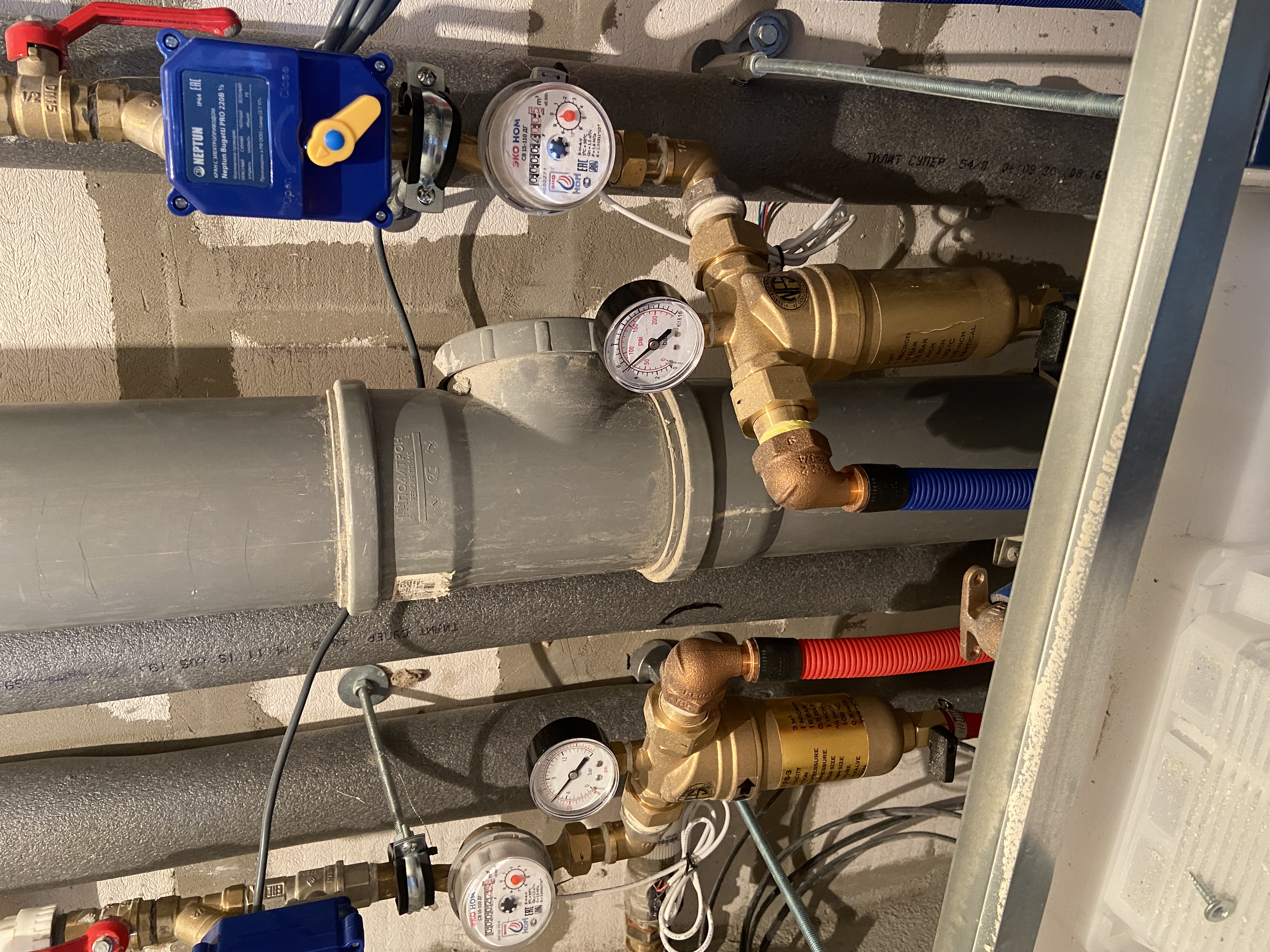
Eliminate Control Copper In Water With Self Cleaning Structured Water FilterCopper in water refers to the presence of the chemical element copper (Cu) in water sources. Copper is a naturally occurring metal found in the Earth's crust and can enter water supplies through various sources and processes:Natural Weathering: Copper can be released into water through the natural weathering of rocks and soils that contain copper-bearing minerals. Over time, rainwater and surface water can dissolve and carry copper particles into rivers, lakes, and groundwater.Corrosion of Copper Pipes and Fittings: Copper is commonly used in plumbing systems, particularly in older homes and buildings. Corrosion of copper pipes and fittings can occur, leading to the release of copper into the water supply. This is more common in areas with acidic or corrosive water conditions.Industrial Discharges: Industrial activities, such as mining, metal production, and manufacturing processes, can contribute to the release of copper into water sources. Industrial discharges and wastewater from industries that use or produce copper-based products can introduce elevated levels of copper into water bodies.Agricultural Runoff: The use of copper-based pesticides, fungicides, and fertilizers in agriculture can result in the presence of copper in water sources. Runoff from agricultural fields can carry copper residues into nearby rivers, streams, and groundwater.Household Sources: Copper can enter water from household sources, such as plumbing fixtures, faucets, and water storage tanks. Copper fixtures and fittings, particularly those made of brass or bronze, may contain higher levels of copper, which can leach into the water.Atmospheric Deposition: Copper particles present in the atmosphere, resulting from industrial emissions, vehicle exhaust, and natural sources, can deposit into water bodies through atmospheric deposition. Rainfall and air-borne copper particles can contribute to copper contamination in water.It is important to note that copper is an essential nutrient for human health, required in small amounts. However, elevated levels of copper in water can have adverse effects. Excessive copper concentrations can impart a metallic taste to water and may cause health concerns, such as gastrointestinal issues, liver and kidney damage, and developmental effects, especially in vulnerable populations.Monitoring copper levels in drinking water supplies is crucial to ensure compliance with regulatory guidelines. Water treatment methods, such as filtration, ion exchange, or reverse osmosis, can be employed to reduce copper levels if they exceed recommended limits. Proper maintenance of plumbing systems, including regular inspections and replacement of corroded copper pipes, can help minimize copper leaching into water sources.
24/05/2023
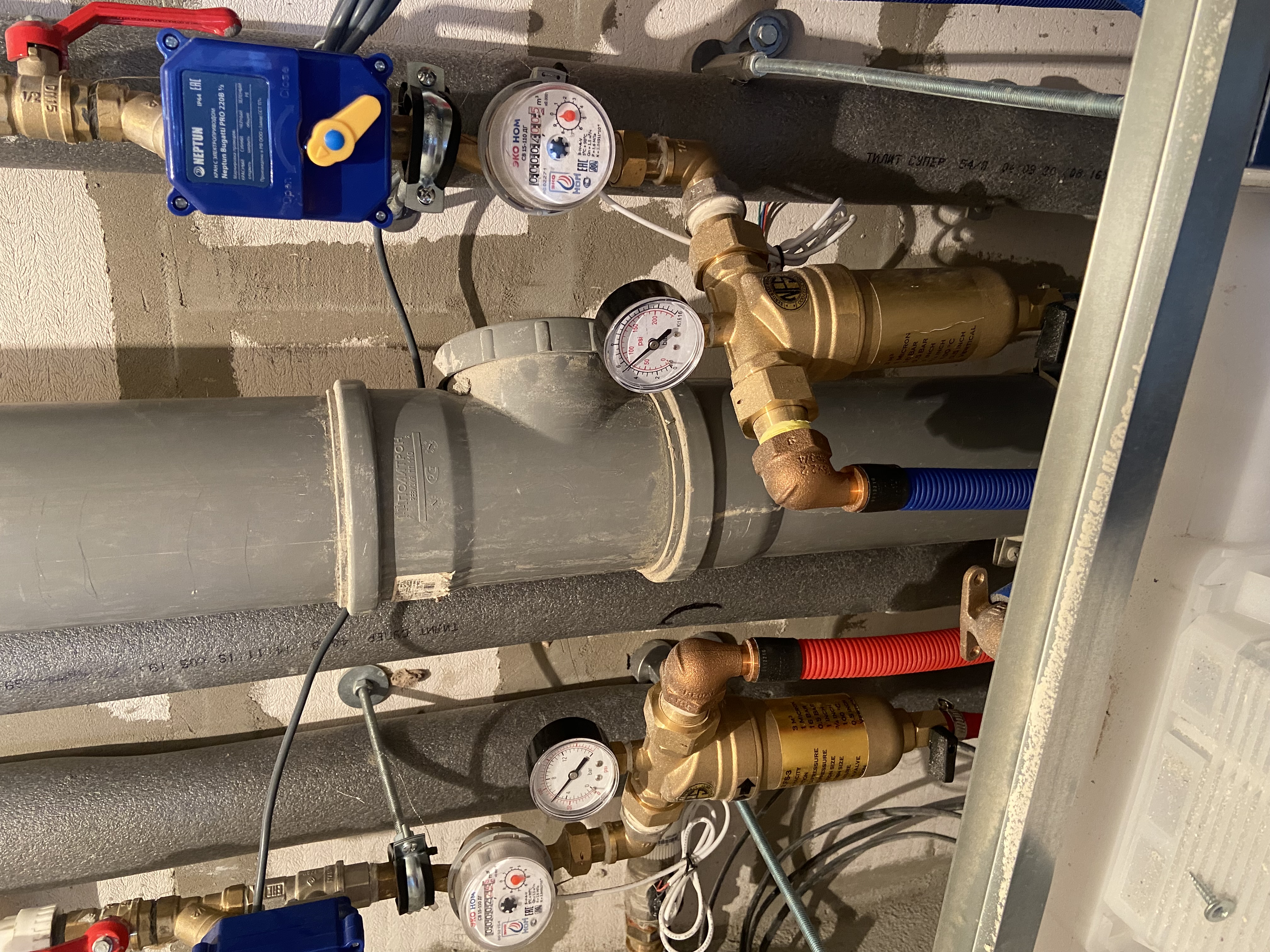
Eliminate Control Copper In Water With Self Cleaning Structured Water FilterCopper in water refers to the presence of the chemical element copper (Cu) in water sources. Copper is a naturally occurring metal found in the Earth's crust and can enter water supplies through various sources and processes:Natural Weathering: Copper can be released into water through the natural weathering of rocks and soils that contain copper-bearing minerals. Over time, rainwater and surface water can dissolve and carry copper particles into rivers, lakes, and groundwater.Corrosion of Copper Pipes and Fittings: Copper is commonly used in plumbing systems, particularly in older homes and buildings. Corrosion of copper pipes and fittings can occur, leading to the release of copper into the water supply. This is more common in areas with acidic or corrosive water conditions.Industrial Discharges: Industrial activities, such as mining, metal production, and manufacturing processes, can contribute to the release of copper into water sources. Industrial discharges and wastewater from industries that use or produce copper-based products can introduce elevated levels of copper into water bodies.Agricultural Runoff: The use of copper-based pesticides, fungicides, and fertilizers in agriculture can result in the presence of copper in water sources. Runoff from agricultural fields can carry copper residues into nearby rivers, streams, and groundwater.Household Sources: Copper can enter water from household sources, such as plumbing fixtures, faucets, and water storage tanks. Copper fixtures and fittings, particularly those made of brass or bronze, may contain higher levels of copper, which can leach into the water.Atmospheric Deposition: Copper particles present in the atmosphere, resulting from industrial emissions, vehicle exhaust, and natural sources, can deposit into water bodies through atmospheric deposition. Rainfall and air-borne copper particles can contribute to copper contamination in water.It is important to note that copper is an essential nutrient for human health, required in small amounts. However, elevated levels of copper in water can have adverse effects. Excessive copper concentrations can impart a metallic taste to water and may cause health concerns, such as gastrointestinal issues, liver and kidney damage, and developmental effects, especially in vulnerable populations.Monitoring copper levels in drinking water supplies is crucial to ensure compliance with regulatory guidelines. Water treatment methods, such as filtration, ion exchange, or reverse osmosis, can be employed to reduce copper levels if they exceed recommended limits. Proper maintenance of plumbing systems, including regular inspections and replacement of corroded copper pipes, can help minimize copper leaching into water sources.
24/05/2023
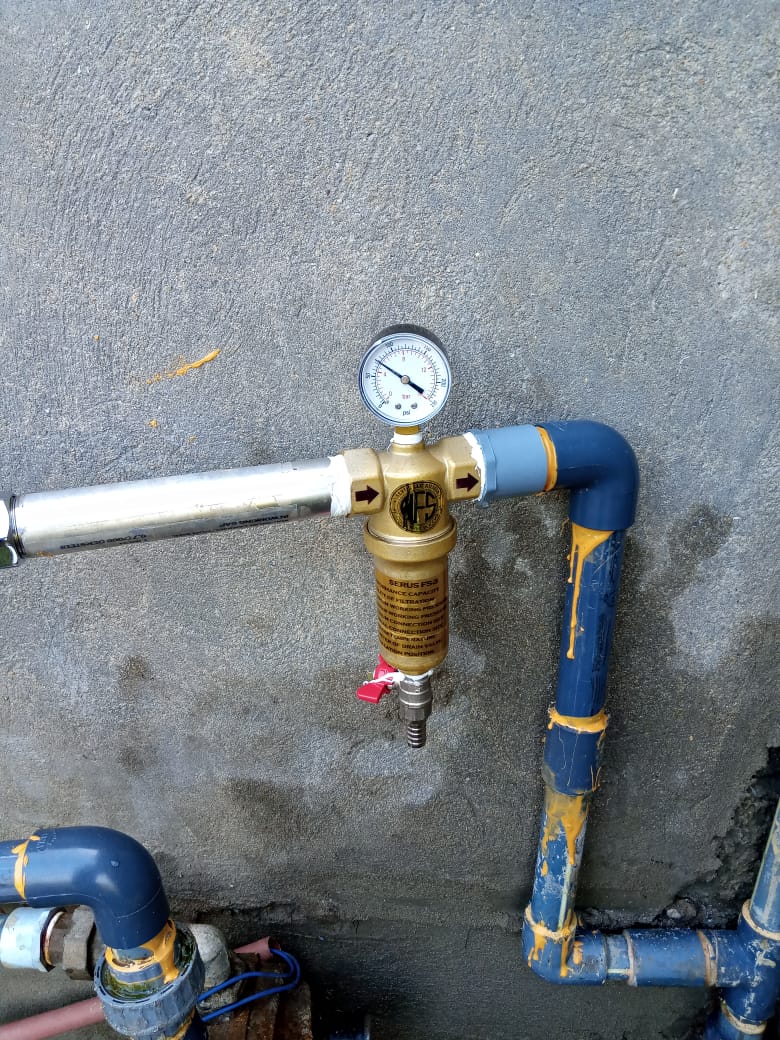
Eliminate control zinc in water With Self Cleaning Inline 1 Micron Water FilterZinc in water refers to the presence of the chemical element zinc (Zn) in water sources. Zinc is a naturally occurring metal found in the Earth's crust. It can enter water supplies through various sources and processes:Natural Weathering: Zinc can be released into water through the natural weathering of rocks and soils that contain zinc-bearing minerals. Over time, rainwater and surface water can dissolve and carry zinc particles into rivers, lakes, and groundwater.Industrial and Agricultural Activities: Human activities, such as mining, smelting, and manufacturing processes, can introduce zinc into water sources. Industrial discharges, wastewater from zinc-related industries, and agricultural runoff containing zinc-based fertilizers or pesticides can contribute to elevated levels of zinc in water.Corrosion of Zinc-containing Materials: Zinc is commonly used as a protective coating for galvanized pipes and fittings. However, over time, corrosion of these materials can occur, leading to the release of zinc into the water supply.Household Plumbing: Homes with older plumbing systems that contain zinc or galvanized pipes may experience leaching of zinc into the water due to corrosion or wear and tear. This can result in increased zinc levels in tap water.Atmospheric Deposition: Zinc can be present in water through atmospheric deposition. Airborne particles containing zinc, such as industrial emissions or vehicle exhaust, can settle into bodies of water or be carried by rainfall, contributing to zinc contamination.It is important to note that zinc is an essential nutrient for human health and is required in small amounts. However, excessive levels of zinc in water can have adverse effects. High concentrations of zinc can impart an unpleasant taste to water, and prolonged exposure to elevated zinc levels may have health implications, such as gastrointestinal issues.To ensure the safety and quality of water, monitoring zinc levels in drinking water supplies is necessary. Water treatment methods such as filtration, ion exchange, or activated carbon can be employed to reduce zinc levels if they exceed recommended guidelines. Proper corrosion control measures, including maintaining plumbing systems and using appropriate materials, can also help prevent zinc leaching into water sources.
